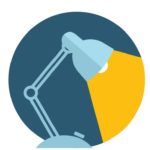Social Media has also had an effect on our workplace. One study suggests that 30% of people are on social media while at work for one hour every day with 75% accessing social media on their smartphones while at work every day. It is reported that over half of all employees access their Facebook profiles at work, losing on average 15 minutes of productivity per day. And that’s just Facebook alone. Interestingly, a salary.com report indicated that social media is only the second major time waster, with the most common sites accessed during the work day being news sites.
The challenge of managing this distraction is very real. However, the news is not all bad. I will be the first to say that digitalisation has aided us. It has revolutionised our workplace allowing us to be more mobile and interactive. There are great benefits in terms of connectivity, as a source for creative ideas, access to information and for marketing purposes. There is also evidence that web surfing can be a good way to relieve stress. However, with the digital world now here, we need to learn how to reap the benefits but also control its power as a distraction.
The modern world of technology can be a constant temptation at work, and its impact on employee productivity is a concern. Research now shows that while digitalisation has added benefits to us in our workplace, digital distraction is not only a time stealer but it can significantly impair our ability to think clearly and creatively. In fact, one study found, just by noticing an email coming into your inbox, your IQ reduces by 10 points at that moment. In Dave Coplin’s book, The Rise of the Humans: How to Outsmart the Digital Deluge, he highlights that after an interruption such as checking an email or sending a quick text, it can take people from 15 to 23 minutes to get back to focusing to where they were before.
In recognising this, we now need to turn our attention to how we manage the constant interruptions and accessibility. However, most organisations have provided little, if any, guidance as to how to manage these ongoing interruptions and distractions.
Most people typically overestimate their ability to multitask and underestimate their ability to evaluate how effectively their own mental processes are operating at any given time mostly because this is entirely unconscious. However, our minds are simply not wired to simultaneously perform two complex tasks at any one time (Meyer and Schvaneveldt).
So, let’s take a look at what might be best practice.

Recognise the problem
We can only get away from digital distraction when we know what is imprisoning our time and then deal with it. This can be specific to individuals. Ask the question: What are the obstacles that are preventing me from being most effective?
Some key questions:
- What am I doing that wastes my time?
- What other factors encourage or force me to waste my time?
- What do I do that wastes the time of others?
- What am I doing that could be handled by someone else, possibly as well, if not better or cheaper?
- What am I doing that really does not need to be done at all?
The answers should give you a list of the most common time wasters in your average day. Keep that list this is your clue as to where you need to be targeting areas of distraction.
First things first: priorities
To borrow one of Stephen Covey’s habits (The Seven Habits of Highly Effective People), be clear about what your overarching priority is. In that moment, that hour, that meeting etc., what should be your focus. What is my priority? What is the most valuable use of my time right now? The answer to that question will filter out social media and other distractions.

From an HR perspective, as an employee, you have been engaged and have agreed legally to work a set number of hours in exchange for a set amount of money. Where we do anything else, it is essentially theft of company time a thought that doesn’t sit comfortably with most of us.
In an ideal world, highest-priority tasks should generally be worked on first, and the lower ones set aside. Refrain from switching among tasks, as it affects focus. Try these simple, common-sense strategies: set clear priorities, set and stick to a schedule, break up projects into smaller tasks, and practice delegation. For low priority tasks delegate, defer or dump.

The inbox
It is estimated that the average worker receives 121 emails every day. Even if it takes one minute to read and respond to each, that’s two hours in the day already gone. Some research suggests we spend up to one-quarter of our workday answering and reading emails. Added to that, we check our smartphones on average 150 times a day.
There is now increasing commentary as to how to best manage emails. Still, many of us flounder our way through the mire of emails every day with no systemised approach or skill in how to manage our out of control inbox. Consider the following:
- Schedule time mark your calendar as to when you are going to go through your inbox and respond. Newsflash not responding to the majority of your emails immediately will not cause harm.
- Don’t leave your email program open all day. Alerts from incoming messages can interrupt workflow and impact the ability to focus on a task. Block off times throughout the day for checking emails.
- For particularly focused work, craft an email reply like the one cited by Tim Ferris in ‘The Four Hour Work Week,’ e.g. Due to”¦.. I’m currently checking and responding to emails twice daily ”¦.If you require urgent assistance that can’t wait, please contact me via [e.g. PA/phone number etc.]”
- When you do check, delete unwanted emails immediately, archive those that don’t need attention and then action emails as required. Set yourself a 48-hour response rate for non-urgent emails. Communicate to the sender if you are unable to respond immediately but that you will touch base shortly. Deadline it and then follow up. Get your house in order; tidy up, plan and organise your inbox with labels, folders and categories.
- Familiarise yourself with what your email program can do for you. There are all sorts of rules and filing mechanisms that most of us aren’t utilising.
- Unsubscribe!

The cellphone
Smartphones have revolutionised the way we work, but by simply handing a staff member a work phone, you are immediately adding an additional pressure and increased work interruption to their day.
While some apps have made us more productive, the multitasking component of a cellphone is most likely having an impact somewhere, somehow.
Policing employees can have a negative impact on culture. Compartmentalising time can be good, where we encourage work breaks and educate that switching tasks is better than multitasking. Volkswagen implemented a no-cellphone/checking email policy for non-management staff outside of 30 minutes before or after work to encourage a greater work-life balance for employees. Setting clear expectations with staff is important.
When actively avoiding texting and driving, we intentionally put our phone out of reach. The same could apply in the office. Schedule periods where you put your phone on “Do Not Disturb” mode. Also block out time to catch up on calls, texts and other apps. Before you download yet another app, consider its usefulness.

Pause
An alarming 73% of interruptions are handled right away without any consideration for priority. Once you recognise an interruption, pause. Write down your last thought to help you pick up from where you left off.

How to structure your work day: breaking the cycle
US president Dwight Eisenhower stated, “I have two kinds of problems, the urgent and the important, The urgent are not important, and the important are never urgent”. These are not the same thing.
Important is how significant the task is in relation to your overall purpose (i.e. the purpose of your job, as a parent etc.).
Urgent is how soon the task must be completed.
We often get the two confused, especially in terms of digital disruptions such as emails. The judgement of this categorising is crucial for good time management.
He developed a simple 2ƒ”2 matrix that is now famously known as the Eisenhower Matrix or the Time Management Quadrant (Important v Urgent).
Taking a few minutes to categorise each of your tasks into the appropriate box can be very insightful as to where you typically spend time. More often than not we spend time in ’Urgent but Not Important’, or even the ‘Not Urgent and Not Important’ and for many of us this is where digital disruption occurs. Emails, messages, invites to meetings. These can be time wasters and things that appear to be worth doing, tasks that put us into “reply mode” and distract us from our most important tasks. The ‘Important but Not Urgent’ is where most people spend the least time, but it is the most critical area for success, development and proactive self-determination. ‘Important but not Urgent’, typically lack deadlines, so we press the snooze button on them.
Think like a chef. A chef doesn’t just rush in and deal with interruptions and distractions as the day goes on. They take time in the beginning, identify their steps, the right utensils and ingredients, arrange their station. Strategy first, execution second. Take some moments to plan your day and take a focused and considered approach to your work.

Deep work
The concept of Deep Work is the ability to focus without distraction on a cognitively demanding task. Deep Work, is about maximising the intensity of work per unit of time. It is the batching of hard, but important intellectual work into long, uninterrupted stretches. You can look at it as a concept of “fixed schedule productivity”, creating and vigorously protecting a schedule that provides the ideal balance for you.
One concept of Deep Work is the trademarked Pomodoro Technique. You can find a summary of this technique on YouTube. The Pomodoro Technique (pomodoro is tomato in Italian) is based on a tomato timer that you might set for 25 minutes repeating cycles of 25-minute bursts of work followed by a short break.

- The 3-hour window. Cherish the first three hours according to psychologists they are your most precious and productive. Instead of leaping into emails and voicemails, focus those first hours on work that is most important to you and your job and get your toughest work done. Research shows that most adults do their best-focused work in the late morning. Rising body temperature gives concentration, memory and alertness a boost. All of those benefits start to decline around noon especially after a meal.
- Cognitive function decreases from morning to afternoon. Message: Don’t put off the tough stuff.
- Know when your brain and body need a rest. Physiologically, we follow “ultradian rhythms” or cycles that last 90 to 120 minutes. Think of these as attention span cycles.
- Set an end to your day and stick to it: It is easy to allow a work day to extend indefinitely based on the disruptions we’ve had. Working a longer day doesn’t equate to productivity. Plan to finish. Stick to the plan.
- Know what works for you! Differences in body chemistry, personality, professional and office culture mean that one person’s ideal day is another’s productivity nightmare.

Time management versus self-management
The concept of actively and consciously managing our day is foreign to many of us. We all have the same amount of time in any one week. But how often we say”¦. “If only there were more hours in a day?” Most of us feel rushed, overwhelmed and busy. Time is a resource which begs the question: how well are you actively using this resource?! Time is a choice! We all have the same amount, so it’s not really about how we manage our time, but how we manage ourselves (a scary thought).
With only 5% of our brain being conscious at any one time, we need to consciously control our thinking, our disruptions and distractions and harness our thinking to focus on what needs to be done. It’s about being mindful and present in the moment, focusing on what we need to do.
Dr Phil has a great saying, “Things are the way they are because you have allowed them to be structured that way”. That means that if we want something to be different, we must be willing to do something different.
Instead of letting our mind run away from us and reacting to every distraction, keep hold of your thinking and focus.
All things considered, self-awareness is the key. It reportedly takes 21 days to break a habit, so as you make these changes, allow 21 days and notice the difference.
Download article








